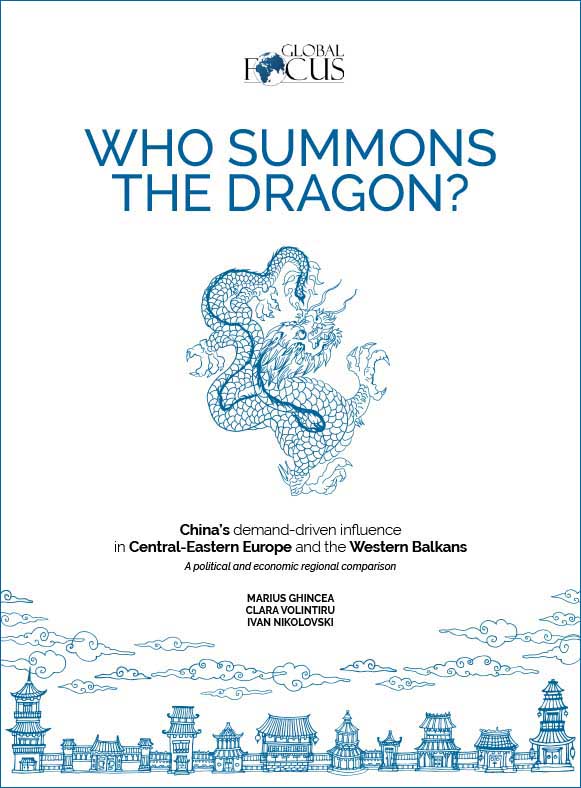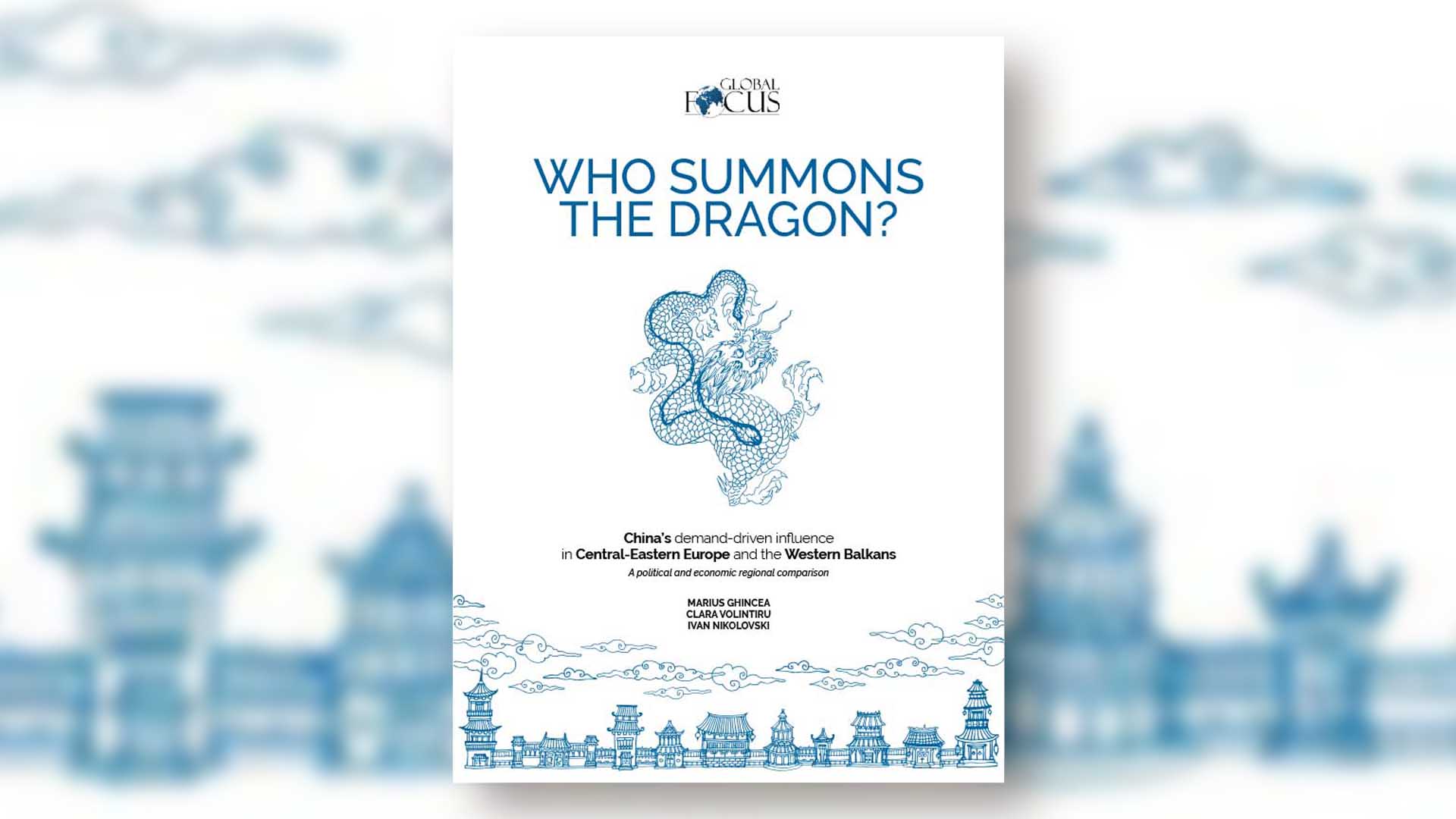A political and economic regional comparison
Based on a mixed-method methodology cross-cutting the political/economical divide, our latest brief shows that while China wants to increase its economic and political influence in the region, there is a significant difference between the story we hear and the facts we see. Despite China’s efforts to leverage vulnerabilities in the region, its political influence seems to be still relatively low. Economic influence by itself cannot match Western economic ties either. Political engagement with China is shaped mostly by domestic factors and geopolitical considerations, particularly those related to security.
Executive Summary
China’s cooperation framework with CEE and Western Balkan countries has attracted the attention of both analysts and decision-makers from Western Europe and the United States. The 17+1 format is now almost a decade in the making, experiencing regular ebbs and flows in the process. Political cooperation and geopolitical concerns, both for CEE and Western Balkan countries and Western actors, continue to shape the degree and character of how the countries in the region cooperate with China. While China’s involvement in the region is conventionally depicted as that of an increasingly influential power using its economic and political tools to reshape the region and pull it apart from its Western European partners, we provide a different vision.
Based on a mixed-method methodology cross-cutting the political/economical divide, we show that while China wants to increase its economic and political influence in the region, there is a significant difference between the story we hear and the facts we see. Despite China’s efforts to leverage vulnerabilities in the region, its political influence seems to be still relatively low. Economic influence by itself cannot match Western economic ties either. Political engagement with China is shaped mostly by domestic factors and geopolitical considerations, particularly those related to security. This is why we suggest that analysts and Western partners focus on the demand-side of China-CEE relations, not on the Chinese supply-side. It is what happens inside the CEE countries which determines China’s influence in the region, and not necessarily what Beijing wants.
We classify regional relations with China into formal and substantive, while also dividing substantive engagement between committed and uncommitted. We show that there is no relationship between economic investment and political engagement, with the notable exceptions of Hungary and Serbia. We also find that what drives bilateral political engagement with China is a desire for strategic autonomy vis-à-vis the West. Thus, a given country’s intensification of relations with China is mostly the result of domestic political dynamics and the emergence of a political will for foreign policy autonomy from Western partners. It is thus an effect of home-grown dissatisfaction with the West, and not caused by a strategic detachment from Western structures.
China also aims to increase its economic influence in Central and Eastern Europe (CEE) and the Western Balkans as a leverage for political influence. Chinese economic influence can be particularly powerful in the region on two accounts: (1) in the case of strategic sectors, where the CEE and WB countries have a substantial investment gap and are starving for capital (i.e., energy, transport infrastructure, telecommunications, and more recently health) or (2) in smaller economies in the region, where the impact of trade, investments or loans can be greater. In both cases, domestic economic vulnerabilities are ‘weaponisable’ dimensions, and the potential for China to exploit these strategic openings is real. Whether it concerns investments and loans, or trade and inter-dependencies in the supply chains, China is willing to weaponise its economic force.
Still, in economic terms, the threat to counterweight Western eco-political influence is (strategically) exaggerated. Chinese economic commitments are completely asymmetric in comparison to both the size of its economic ties with Western European countries, as well as in comparison to the economic ties that CEE and WB have with the transatlantic world.
The outliers in the region are Hungary and Serbia, which have both displayed a substantial political commitment to China. In these countries, however, Chinese economic influence is only slightly higher than the rest of the region, targeting strategic economic sectors (e.g. energy, health, infrastructure), and still well below EU and US economic ties, suggesting that domestic political choices are more powerful explanations than economic integration. Furthermore, despite registering levels of Chinese investments and trade flows which are above the regional average, at the moment countries like the Czech Republic, Poland, Romania, Slovakia and North Macedonia display only formal bilateral political relations with China. In contrast, Bulgaria, Montenegro and Bosnia and Herzegovina seem to show stronger political engagement, despite having economic ties with China below the regional average.In terms of 5G network deployment and attitudes toward Huawei, both the CEE and WB countries follow the same patterns, although there are some notable exceptions. Except for Bosnia and Herzegovina, Hungary and Montenegro, all the other countries from the 17+1 bloc have joined the US-led Clean Network Initiative. Targeting it as an ‘untrusted vendor’, China’s partners from CEE and WB have pledged to prevent the supply of equipment from Huawei for the rollout of their national 5G networks. For a long time, the Chinese company has been a trusted and affordable partner to the countries and their national operators in the two regions, especially in developing the previous generations of cellular networks. However, amid the politicisation and securitisation of the 5G network construction, the majority of CEE and WB countries have either opted for ‘trusted’ Western alternatives such as Ericsson and Nokia, or are expected to follow this path as a result of anti-Huawei laws or corporate decisions by the national operators’ Western parent-companies. Hungary and Serbia, on the contrary, are provid a safe and friendly environment for Huawei’s operations as Budapest and Belgrade announce new projects and deeper cooperation, including in the field of 5G technologies.
Introduction
Over the last decade, China’s relations with Central and Eastern European (CEE) countries, as well as with those in the Western Balkans, have experienced a resurgence. In the aftermath of the 2008 Great Recession, China has pushed forward a new cooperation framework with CEE and the Western Balkans, also known currently as 17+1. This framework promises increased engagement between CEE countries and China, investments in regional infrastructure, trade, and growing ties in cultural and other areas. The conventional wisdom is that this new push for cooperation from China in CEE is part of the former’s attempt to establish itself as a global leader, to contest the supremacy of the United States in the region, and to divide the European Union. Accordingly, the China-CEE cooperation framework is seen as akin to other regional platforms created by China, such as the China-Africa or the China-Latin America and Caribbean cooperation forums. In most media analyses and scholarly evaluations, the Chinese involvement in CEE has been portrayed as substantial, impactful, and set to continue developing and deepening into the future.
At first glance, this conventional depiction of China’s engagement in Central and Eastern Europe seems to be well-founded, and fits neatly with the conventional narrative about great-power competition that has dominated the economic and political analysis of world affairs. China is depicted as an emergent power that has the resources, interests, and willingness to pursue a systematic contestation of the Western-led order. It intends to do so by undermining liberal institutions such as the World Bank or the European Union by creating alternatives such as the Asian Infrastructure Investment Bank (AIIB), or by co-opting developing countries through its Belt and Road Initiative (BRI). Overall, China’s growing influence is taken for granted, with all the policy and rhetorical consequences emerging from this position (Vangeli and Pavlicevic 2019).
We provide a different reading of China’s relations with the CEE and Western Balkan countries, focusing on the interplay of economic and (geo)political relations. We shift from a supply-side perspective that focuses on what China does to a demand-side perspective that looks at what drives the governments in CEE and the Western Balkans to engage economically and politically with China. We argue that the threat posed by the Chinese attempts to actually succeed is (sometimes strategically) exaggerated, and that Western partners should be more concerned about home-grown incentives to cooperate with China, particularly domestically-driven desires for strategic autonomy vis-à-vis the West. According to the available evidence, China has not been able and does not, at least currently, seem to be able to counterbalance Western economic and political influence from a supply-side perspective. The region, and especially the EU members in the region, are deeply embedded in the West’s economic and political networks and institutions. However, when some CEE and Western Balkan governments do increase the intensity of their political and diplomatic relations with China, they seem to do so in order to signal a certain degree of autonomy vis-à-vis the West. Thus, Chinese influence in the region is an effect of domestic desires for strategic autonomy, not a cause of such desires.[iv]This means that Western partners should pay close attention to what happens inside the CEE and Western Balkan countries, and focus less on the purported threat posed by the supply-side strategy China is employing.
However, at the same time, China’s economic incentives may weigh more heavily in the strategic calculations of those CEE and Western Balkan countries with smaller economies that are also less integrated in Western economic networks. Western countries should pay more attention to how Chinese incentives affect the political and economic orientation of these countries, and should be ready to provide counter-incentives.This paper fleshes out the economic and political relations between the CEE and Western Balkans and China, as well as the latter’s influence in the region as it follows on. We first contextualise China-CEE relations by providing a brief analysis of economic flows and political relations over the last decade. We then provide a new analytical framework through which we can analyse China-CEE relations. By supplying an analytical model across two dimensions – economic and political – we classify the relations between the countries in the region and China in four comprehensive categories. Finally, we illustrate our argument with an in-depth case study on Huawei’s activities in the region.






